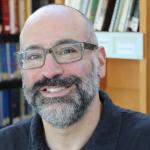By Gregory
Wisdom
People receive and shape their worldview in relationship to others, in community, and in a given culture.
Culture is the outgrowth of humanity’s social nature and is the totality of customs, practices, values, and communal structures that shape a people’s daily life. Culture’s function, in the general sense, is to promote wisdom – knowledge of how to live a full life. Religion tends to be the promoter/keeper of most forms of higher wisdom in any given culture and religion relies on myth to achieve this task.
The human person is a story-telling, metaphor-loving, symbol-making being for whom myth encapsulates information regarding primal, existential meaning. The human person relates on a psychological-spiritual level to stories, narratives, icons, and parables. Therefore, the language of spirituality is that of myth, metaphor, and symbol. All myths are about the transformation of consciousness. A myth speaks to something profound and true about our humanity; it shows us how to live more richly, more humanely, and intensely.
An example of how myth shapes culture can be seen at the height of the Roman Empire. To think as a Roman was by definition to filter the world through a mythical narrative that described how original chaos was brought to order, peace and prosperity under the paternal rule of a benevolent set of Divinities. Roman religion applied that narrative to the cosmos; Roman philosophy applied it to the relation between mind and body, and so on. Roman Legions applied it to the Western world. The difficulty, of course, came when the world started throwing things at the Roman world that couldn’t be made to fit the narrative.
Religions that developed in the ancient world naturally contain mythic accounts as part of their historical-moral story-telling. Ancient peoples were not literal thinkers as are we moderns. Post-enlightenment society shifted toward a more literal, factual means of writing and telling history. The ancients mingled story-telling with their history, recording accounts often in supernatural, fictional, and metaphorical-symbolic terms.
IMPORTANT NOTE – to claim a story as myth does not mean the story isn’t true. Myth in its proper sense means something akin to meta-story – a grand narrative that provides orientation, a sense of place, even an identity. To argue, for example, that the accounts of Jesus’ resurrection are mythic is not to comment on whether they actually happened – rather, it’s to argue that these are pivotal, core accounts that likely have many layers of meaning and symbolism.
Another example – the ancient Jews created and promoted the Exodus myth. The central meaning of the story is the formation of the Hebrew tribes into a unified, liberated people now free to create its own culture. This core narrative of meaning is embedded in a story that includes slavery in Egypt, plagues, and the parting of the Red (or Reed) Sea. The fact that the historical, scientific, linguistic, and archeological record doesn’t support these facts is beside the point – the emergence of a free people is the core truth contained within the highly symbolic story.
Amythia
Western culture has been animated by the Judeo-Christian myths – rooted in a personal-creator God. Over the past 200 years, these myths have substantially eroded due to repeated damage at the hands of various forms of human knowledge.
Increasing numbers of educated Westerners are unwilling to engage in the exhausting mental gymnastics necessary to maintain the Judeo-Christian vision. The reality of the random suffering of innocent people throughout the world stands in contradiction to the assertion of a loving, intervening Deity. Additionally, the cosmological elements of the myth have been undermined by the advances of modern science, and the moral vision of the myth undermined by evolving understandings of human nature, human sexuality, and psychology.
The Western Judeo-Christian worldview has fragmented for a variety of reasons. Many in the West now operate from a worldview that cannot accept the literal truth of the Lazarus account – as well as other core insights of Judeo-Christianity.
The unraveling of the dominant mythos of Western culture means that we are now unhinged from our centuries-old sources/filters of meaning. Western culture is experiencing amythia – the lack of a unified, living myth that is shared by enough individuals to hold sway over the culture and serve as a foundation for a shared cosmology and morality. Contemporary Western culture is now characterized by an increasing anarchy of meanings – and sometimes no meaning at all. All this undermines the ability to achieve a unified vision of meaning and thus a sense of a common good.
Moving Forward
There are no simple antidotes to our current crisis of amythia. Any solutions are difficult to apply and will take decades to deploy and measure for efficacy. We can no longer be religious in the same way as our ancestors. The world has been irrevocably transformed and so have our patterns of thought – by science, development, and human experience itself. We will inevitably think of the world in which we live, and our human place within it, in terms quite different from those presented by previous renditions of the Western religious traditions.
It seems to me that there are at least three basic approaches our culture can take to Judeo-Christianity and its myths.
First, we can simply reject them and embrace atheism, or some other non-Abrahamic religious-mythic outlook. Polls and surveys show that growing numbers of people are doing just this. The rise of New Atheism, the popularity of Eastern philosophies and nature-based spirituality, and the growing numbers of people claiming no religious affiliation is the result of opting for this path.
Second, we can accept the basic Judeo-Christian worldview and find ways to address the cognitive dissonance that seems to arise between its traditional vision and the emerging, more naturalist one of science and modernity. Adopting this approach means accepting that the Lazarus story is likely true, and that it can happen again. It means living with the tensions of sometimes conflicting truth claims from theology, science, history, and even human experience.
Third, we can try to find ways of engaging iron-aged myths with updated thinking, while realizing the need to reinterpret the traditional understanding of Judeo-Christianity. This approach would require the ability to recognize myth for what it is, move beyond the literal concerns, and then, with updated knowledge, engage the myth allowing it to inform and engage us. Adopting this approach means accepting the challenge of arduous reinterpretation that shifts the Judeo-Christian vision in credible directions, but without causing irreparable harm to the entire edifice during the move.
Which approach appeals to you and why?











